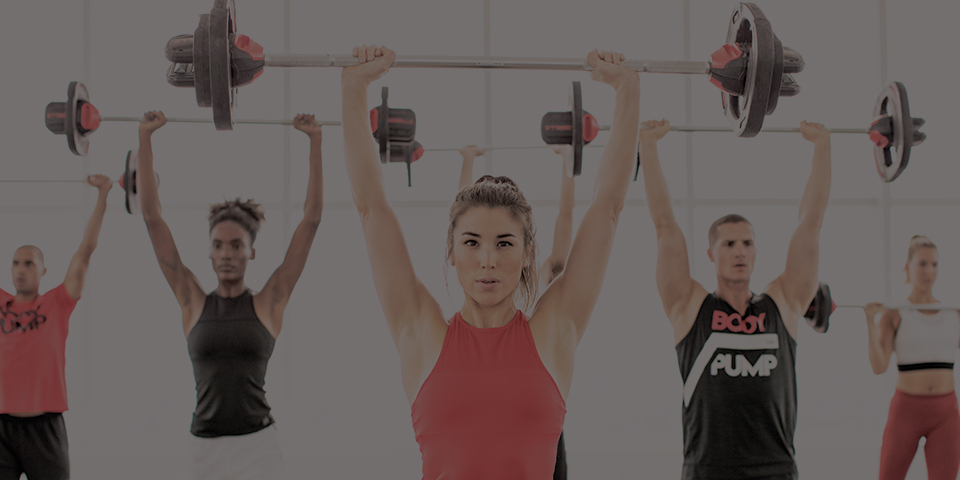
Measuring calorie burn alone not enough says new exercise study
Counting the calories burned in a workout could soon go the way of leg-warmers and leotards, according to ground-breaking new research.
The New Zealand study – published this month in the Journal of Science and Medicine in Sport – showed that certain types of exercise can trigger far greater fat-burning and other healthy responses in the body than simple calorie counting suggests.
The results fundamentally challenge the way we think about calories. They demonstrate that different workouts have different effects on the hormonal and physiological changes that take place in people’s bodies, even if they burn the same number of calories.
Conducted by researcher Nigel Harris of Auckland University of Technology, the study aimed to identify the underlying causes of clear differences in body fat reductions resulting from resistance training–in the form of BODYPUMP™, a low-weight, high-repetition resistance training class created by Les Mills International – compared to more intense cardiovascular workouts,that an earlier study had shown.
By comparing the levels of Human Growth Hormone (HGH) present in subjects after they had completed resistance training and cardio cycling workouts, it was shown that HGH was 56 percent higher after resistance training.
Bryce Hastings, Head of Research for Les Mills International, says “Human Growth Hormone oxidizes fat and builds lean muscle tissue. That’s important for ongoing calorie expenditure because muscle burns more calories than fat.The more muscle you can build, the more calories your body will burn long-term. Combine that with increased fat loss and the result leads to rapid changes in body composition.”
Similarly, blood lactate levels were up to 81 percent higher after resistance training sessions compared to cycling sessions. Lactate levels build when the muscles work hard, and it is the accumulation of lactate from exercise that sparks the previously mentioned growth hormone response.
In fact, it is widely accepted that exercising at an intensity above the lactate threshold, for a minimum of 10 minutes within a workout, is the greatest stimulus there is to the secretion of HGH.
In short, the beneficial effects of certain exercise types – such as resistance and high-intensity training – can last long into the recovery period after the actual workout is over
The results also have implications for the exercisers relying on wearable devices to measure their calorie output during workouts or training sessions, according to Dr Harris.
“Calories matter,” Harris says, “but so does the effect of an exercise session on hormonal and physiological responses,which are known to have positive,long-term effects on body composition. A wearable device which only measures heart rate and calorie countmay therefore be too limited a tool to get adequateunderstanding of the other, arguably more important, adaptations taking place in our bodies when we exercise.”
Overall, says Hastings, the study points to how much more people need to know about the effects of certain exercise types. “It’s complex”, he says, “and just counting calories misses a big part of the jigsaw. We now know that.”
THE STUDY
The New Zealand study set out to establish whether burning calories doing cardiovascular exercise – steadily pedalling on a bike – was the same as burning calories doing BODYPUMP.
More specifically, the research team were interested to compare its study participants’ physiological and hormonal responses to the two different workouts, even when the calories burned and the duration of each session were exactly the same.
The research was in response to an earlier study that had shown clear differences in terms of body fat reductions resulting from resistance training compared to more intense cardiovascular workouts, but had not been able to identify the underlying causes.
As women make up the majority of BODYPUMP participants, the study focused on 13 healthy females. First of all, they did a BODYPUMP session.The research team measured the calories they burned during that class and set the intensity levels for the cycling session accordingly, to make sure calorie expenditure and duration was exactly the same in both workouts.
Blood was taken from the participants before and after BODYPUMP, and before and after the cycling session, to measure their hormonal response to the two workouts.
On all counts, the results of the study show that the body has a far greater response to BODYPUMP than it does to a calorie-matched, steady-state cardio workout.
When blood lactate levels were examined, they were 81 per cent higher after BODYPUMP than after cycling, while HGH was 56 per cent higher.
In this era of activity-tracking, when we have instant workout data at our fingertips, it is tempting to judge our activity based exclusively on how many calories we have expended.
When compared to a more intense cardiovascular session, BODYPUMP might have a lower calorie burn during the 55 minutes of the class itself. However, as this study shows, BODYPUMP’s impact on metabolism and body composition is both significant and ongoing.
A workout regime that combines the right balance of resistance and cardio training helps ensure all the positive long-term benefits are maximized, making calorie counting just one consideration when judging a workout.
For more information, visit lesmills.com/research

